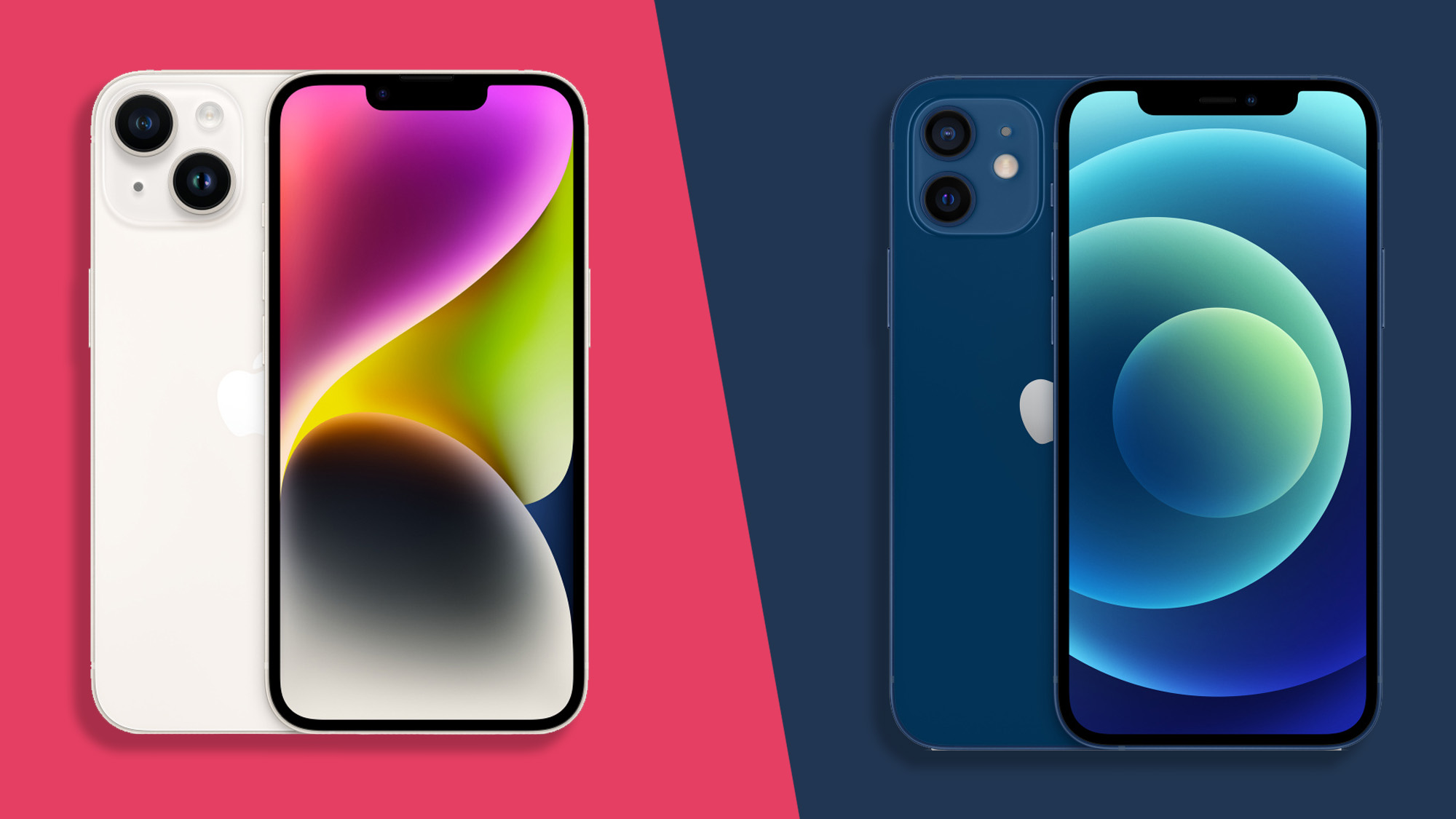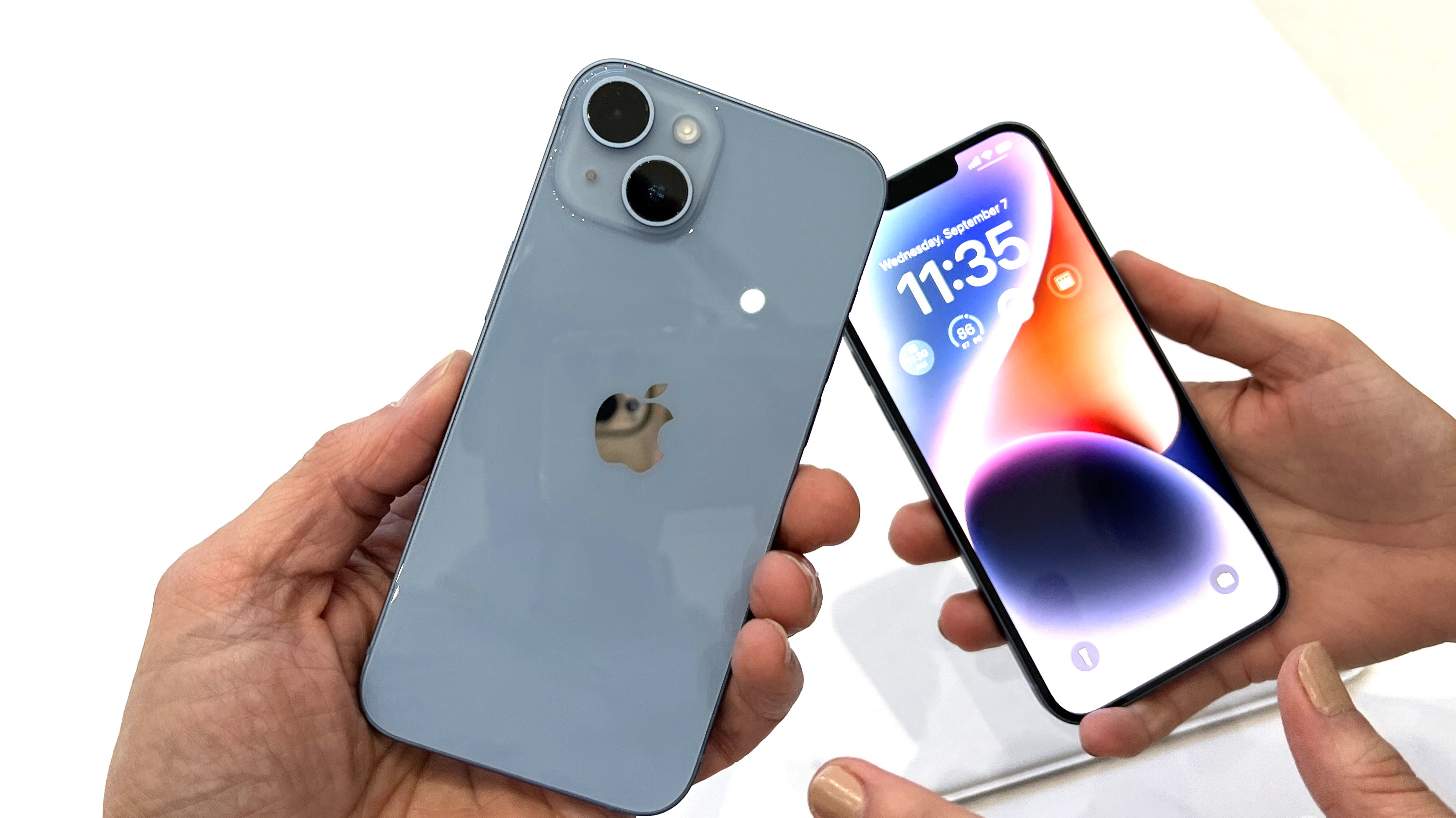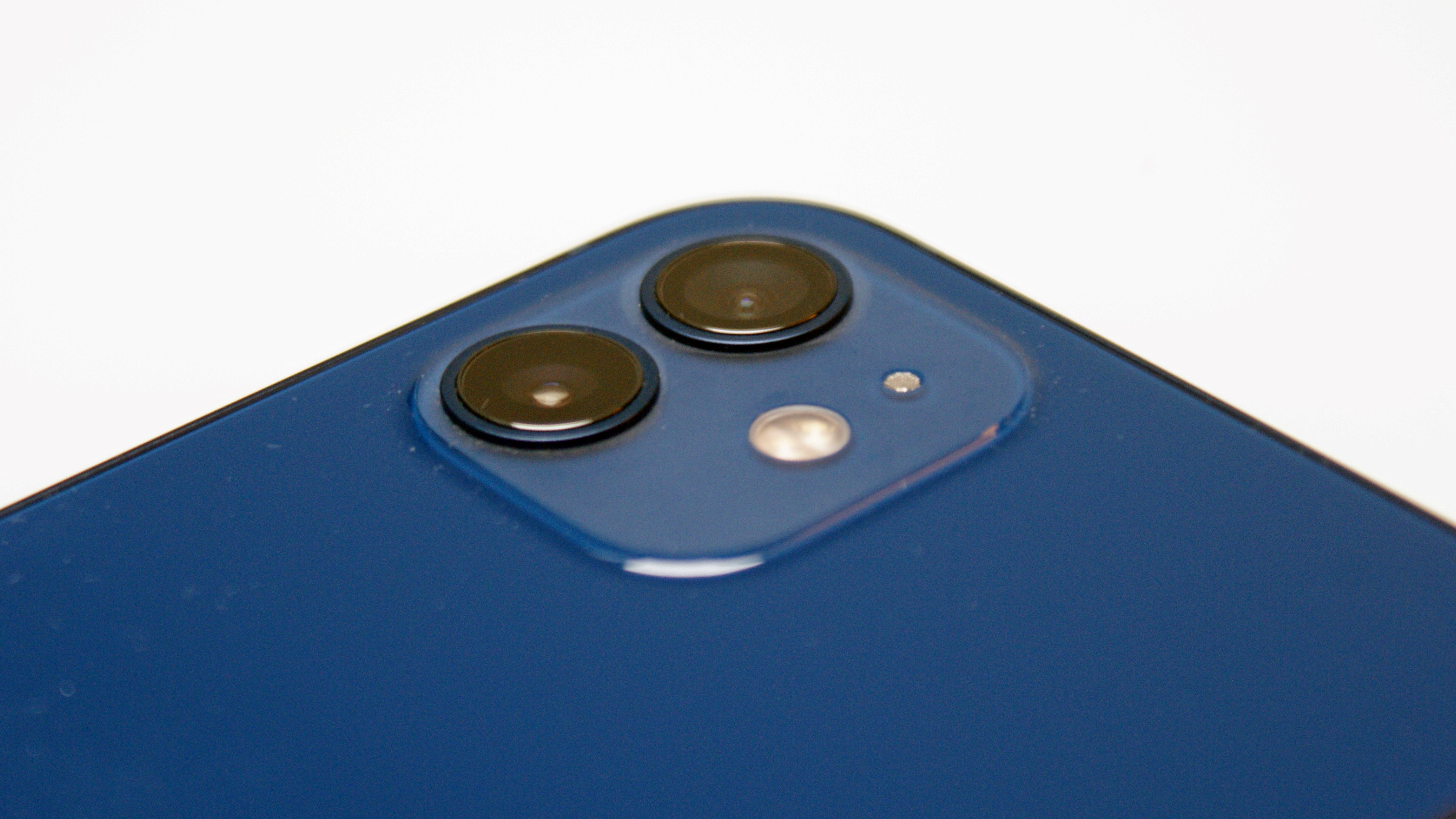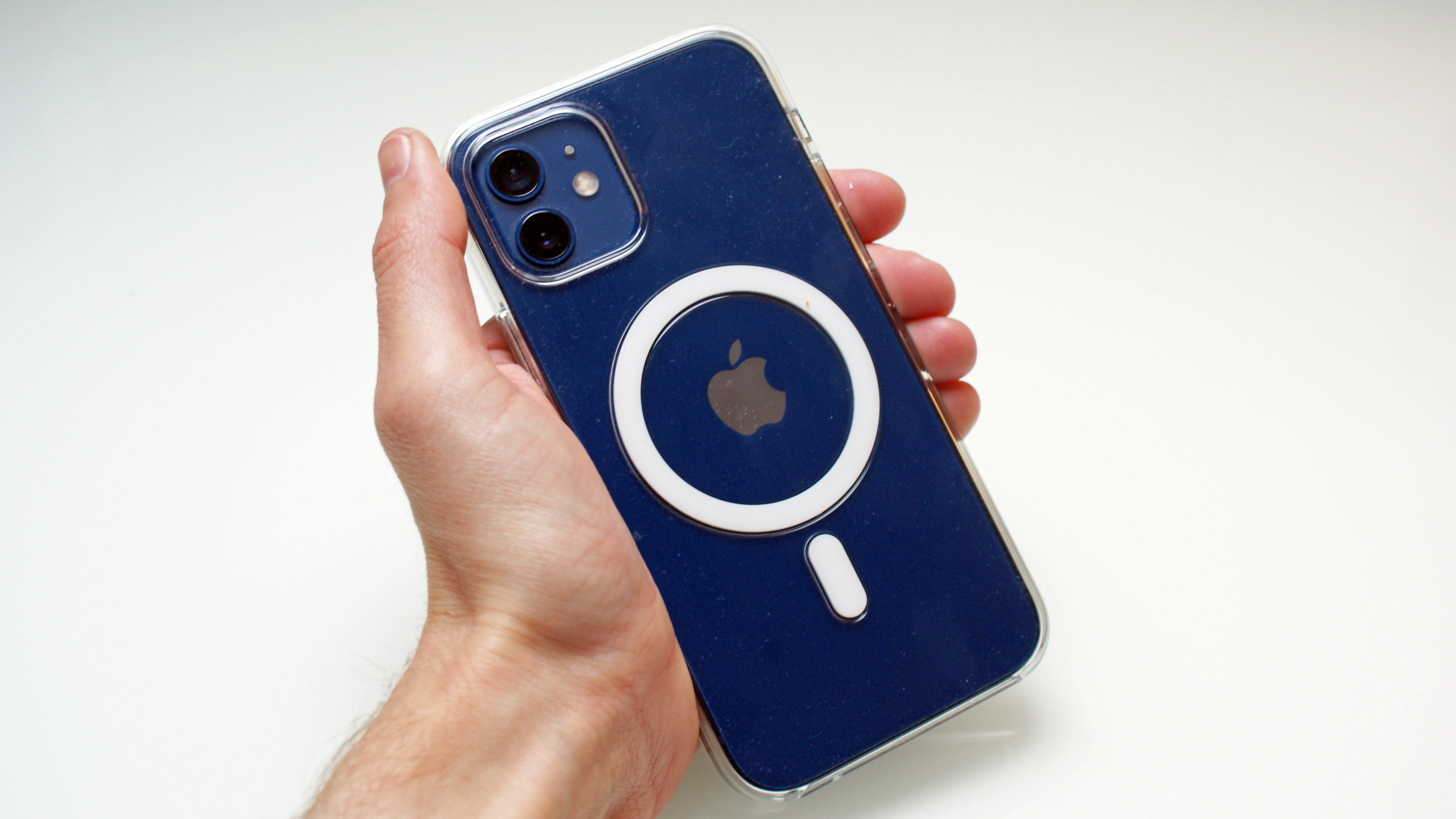
Apple has announced the iPhone 14, and we can almost guarantee that it’ll be the most popular smartphone of the next 12 months.
But how does it compare to the iPhone 12? That might sound like an odd comparison to make, but with Apple keeping the older phone around for another year, it could be just the cost-effective alternative that this cash-strapped world needs.
So how do the two phones compare spec for spec? Has Apple really managed to improve its smartphone formula sufficiently over two years to warrant paying hundreds of dollars or pounds more?
Let's take a closer look.
iPhone 14 vs iPhone 12 price and availability

The iPhone 14 hits shops on September 16. Prices start from $799 / £849 / AU$1,399 for 128GB of storage, while 256GB will set you back $899 / £959 / AU$1,579, and 512GB will cost $1,099 / £1,179 / AU$1,899.
US prices have held from the iPhone 13, but the rest of the world has taken a bit of a hit, thanks to inflation and fluctuating currencies.
The iPhone 12 landed on October 23, 2020. Prices started from $799 / £799 / AU$1,349 for the entry-level 64GB model, moving up to $849 / £849 / AU$1,429 for 128GB and $949 / £949 / AU$1,599 for 256GB.
Sign up for breaking news, reviews, opinion, top tech deals, and more.
Interestingly, the iPhone 12 is still being offered as new directly through Apple, even after the iPhone 14 launch. Prices now start from $599 / £649 / AU$1,049 for the entry-level 64GB model, moving up to $649 / £699 / AU$1,129 for 128GB and $749 / £809 / AU$1,299 for 256GB.
If you're already convinced that the iPhone 14 range is the way to go, check out our best iPhone 14 deals to nab yourself a relevant bargain.
iPhone 14 vs iPhone 12 design

The iPhone 14 follows the design formula set out by the iPhone 12 two years prior. Both phones have a flat glass front and back, and a dead flat right-angled aluminum frame.
Given their common design, it shouldn’t come as a surprise to learn that these two phones have similar dimensions. The iPhone 12 measures 146.7 x 71.5 x 7.4mm, while the iPhone 14 is just a little thicker at 146.7 x 71.5 x 7.8mm.
The newer phone is also a bit heavier at 172g, as compared to the 164g iPhone 12. They’re both premium products, with IP68 water and dust resistance ratings and super-tough ceramic glass screen covers.
Apple’s notch has become quite the distinctive mark at this point, and both phones have one. However, the iPhone 14’s notch is 20% smaller than the iPhone 12’s.
In terms of color options, the iPhone 14 sees the return of purple to the range. It also comes in blue, Midnight, Starlight, and red. It’s a very similar offering to the iPhone 12, though that also offered a green option.
iPhone 14 vs iPhone 12 display

You’re probably picking up on the fact these two phones look incredibly similar by this point. That extends to a nigh-on identical display being used in both: a 6.1-inch OLED with a 1170 x 2532 resolution.
Both max out at 60Hz, so you don’t get the silky smooth ‘ProMotion’ refresh rate of the recent Pro models. But make no mistake, these are two strong screens.
There is one notable way in which the iPhone 14 display beats the iPhone 12. It gets a fair bit brighter in direct sunlight, with an 800 nits high brightness mode comparing favorably with the iPhone 12’s 625 nits equivalent.
iPhone 14 vs iPhone 12 camera

Both the iPhone 14 and the iPhone 12 sport dual 12MP camera systems, but the iPhone 14 set-up trounces its older brother’s in every respect.
The iPhone 12 camera was arguably where the company took its foot off the gas; with more attention paid to its bold new design. The camera hardware was very similar to the iPhone 11 before it, resulting in strong but not mind-blowing results.
The same can’t be said of the iPhone 14. Essentially, Apple appears to have taken the larger, better main sensor from the iPhone 13 Pro and slotted it into the more affordable iPhone 14.
It features larger pixels (1.9µm vs 1.4µm), has a wider aperture (f/1.5 vs f/1.6), and benefits from a more advanced sensor-shift OIS (optical image stabilization) system. Add in Apple’s new Photonic Engine, which applies Deep Fusion earlier in imaging process, and you have an iPhone 14 that can take far better shots than the iPhone 12 in mid to low lighting conditions. We’ll need to test to be sure, but we’re expecting a massive difference.
Apple has also improved the iPhone 14’s front camera, adding autofocus and supplying a wider f/1.9 aperture (rather than the f/2.2 of the iPhone 12). Apple says that this results in superior low light focusing on selfie shots, and group shots that can be taken from further away.
iPhone 14 vs iPhone 12 specs and performance

There’s some disappointment surrounding the iPhone 14’s processor, which for the first time is left behind by its Pro brother.
However, the A15 Bionic chip that powers the iPhone 14 is still much more capable than the A14 Bionic chip of the iPhone 12. Sure, they’re only a single generation removed rather than two generations, but it’s still an improvement.
Besides, this is the A15 Bionic as seen in the iPhone 13 Pro, not the base iPhone 13. This iteration features an extra GPU core for a healthy graphical boost. The newer chip is also more energy efficient.
If pre-launch spec leaks are to be believed, the iPhone 14 also comes with 50% more RAM than the iPhone 12. It’s 6GB versus 4GB, which should boost app switching performance.
The iPhone 14 gives you better storage options too, with a higher entry model of 128GB, as opposed to the iPhone 12’s 64GB. Beyond that, the iPhone 14 gives you 256GB and 512GB, while the iPhone 12 tops out at 256GB.
iPhone 14 vs iPhone 12 battery

You’ll never see Apple talking about specific capacities, but we’ve heard rumors that the iPhone 14 comes with a a 3,279 mAh battery. If accurate, that would be quite a bit bigger than the iPhone 12’s 2,815 mAh cell.
We weren’t massively impressed with the iPhone 12’s stamina in our original review, finding that moving around between 4G and 5G networks would drain the juice quite rapidly, leading to an empty battery after 16 to 18 hours.
The iPhone 13’s stamina was “significantly improved compared to the iPhone 12,” so given the hardware similarity with the iPhone 14, we’re expecting similar performance this time around.
Takeaway
The iPhone 14 is one of the safest and flat out dullest updates we’ve ever seen from Apple, but that’s compared to the iPhone 13.
When you set it up against the two-year-old iPhone 12, the iPhone 14 is clearly the better phone. They might look similar, but the iPhone 14 is faster, has a brighter display, and what will inevitably be a significantly better camera system. We’re also confident that the iPhone 14 offers much better stamina than the iPhone 12.
However, with inflation bumping the prices of the iPhone 14 in all but the US, and with the iPhone 12 sticking around as a brand new option for another year at a lower RRP, it’s going to be a tempting pick for those who are watching the pennies.
The iPhone 12 is a very similar-looking and handling phone to the iPhone 14, yet it can be had for hundreds less. That’s something to think about in these more frugal times.

Jon is a freelance journalist who has been covering tech since the dawn of the smartphone era. Besides TechRadar, his words and pictures have appeared in The Telegraph, ShortList, Tech Advisor, Trusted Reviews, Expert Reviews, and more. He largely covers consumer technology, with a particular focus on smartphones and tablets. However, he's also been known to dabble in the worlds of entertainment and video games.